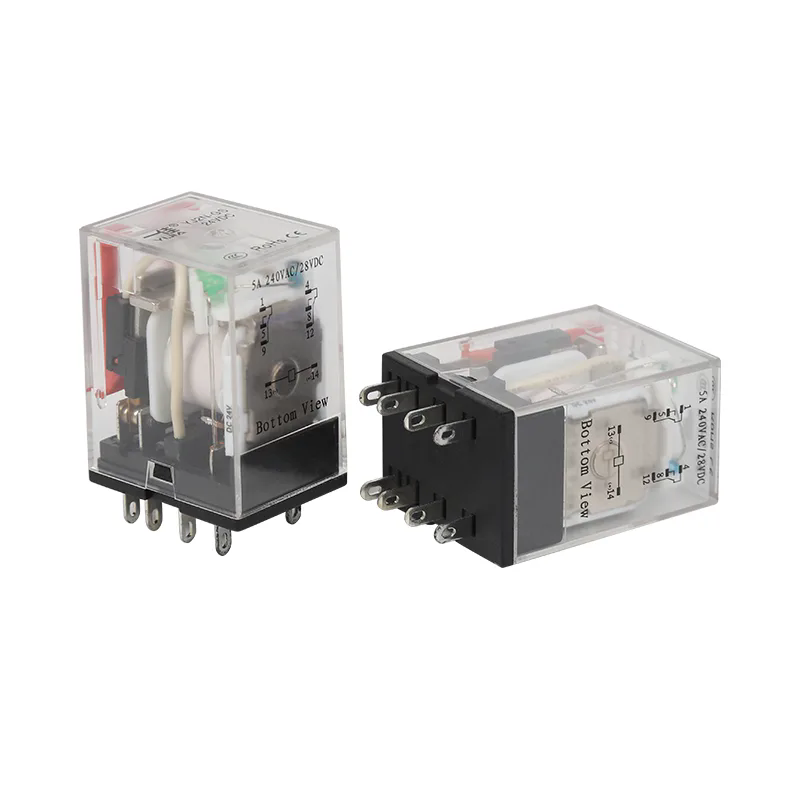What Makes Customised Relays the Smart Choice for Modern Electronics ?
2025-10-13
In the fast-evolving landscape of electronics and industrial automation, Customised Relays have become an indispensable component that drives precision, reliability, and adaptability. Unlike standard off-the-shelf relays, customised versions are specifically engineered to meet unique technical demands—whether for voltage compatibility, current control, environmental resilience, or integration with smart systems. These relays serve as intelligent switches that allow circuits to communicate efficiently, ensuring safety, performance, and system longevity.
From renewable energy systems to automotive electronics, and from HVAC units to industrial machinery, the demand for tailored relay solutions continues to grow. The reason lies in their ability to align perfectly with complex operating conditions and stringent industry standards. By offering design flexibility, custom-made relays enhance performance stability while reducing long-term maintenance costs.
The primary purpose of Customised Relays is not just to switch electrical loads, but to do so in a way that optimizes power efficiency, ensures thermal balance, and increases lifespan. When designed properly, a customised relay becomes a silent yet powerful driver of automation — improving operational control across industries ranging from telecommunications to smart home systems.
Why Are Customised Relays More Efficient Than Standard Relays?
The efficiency of a relay depends on its compatibility with the specific application environment. Off-the-shelf relays may offer convenience, but they often fall short when precision, endurance, or special environmental conditions are involved. This is where Customised Relays excel.
Key Advantages of Customised Relays
| Parameter | Customised Relay Feature | Performance Benefit |
|---|---|---|
| Rated Voltage and Current | Designed according to circuit requirements | Ensures stable operation and prevents overload |
| Contact Material | Options include silver alloy, gold-plated, or tungsten | Enhances conductivity and minimizes wear |
| Coil Resistance | Adjustable for low or high coil power consumption | Optimizes power efficiency |
| Operating Temperature Range | Wide range from -40°C to +125°C | Reliable under extreme industrial environments |
| Mounting Type | PCB, plug-in, or panel mount | Enables easy integration and maintenance |
| Switching Capacity | Configurable from milliamps to hundreds of amps | Ideal for both signal and power switching |
| Insulation Resistance | Custom-tested to meet safety standards | Prevents current leakage and ensures long-term durability |
| Shock and Vibration Resistance | Mechanically reinforced design | Guarantees stable performance in mobile and rugged applications |
The adaptability of customised relays extends beyond just the hardware specifications. Engineers can define actuation time, terminal layout, and sealing properties to match each application precisely. This results in fewer failures, reduced downtime, and greater control accuracy.
Additionally, by tailoring the electromagnetic coil and contact configuration, energy losses are minimized — a crucial factor in today’s energy-conscious industries. The use of high-grade materials and precision-engineered contact mechanisms ensures a higher contact life cycle, which translates into significant cost savings over time.
How Are Customised Relays Designed and Integrated Into Modern Systems?
Designing a customised relay is a complex process that blends electrical engineering, materials science, and environmental testing. The creation process typically involves four critical stages: requirement analysis, design optimization, prototyping, and testing.
Requirement Analysis
The process begins with a detailed understanding of the application’s electrical parameters — voltage, current, load type, frequency, and operating conditions. For example, a relay for an electric vehicle must handle high inrush currents and operate reliably in varying temperatures, while one used in medical equipment must ensure precision and electromagnetic compatibility.
Design Optimization
Engineers then customize parameters such as coil resistance, contact configuration (SPST, SPDT, DPDT, etc.), and insulation materials. Advanced simulation tools are employed to predict performance and thermal behavior, ensuring that the relay meets or exceeds safety standards such as IEC, UL, or RoHS compliance.
Prototyping and Validation
A prototype is produced using precision manufacturing processes like CNC machining or automated coil winding. The prototype undergoes rigorous testing — including high-voltage endurance, vibration resistance, humidity exposure, and thermal cycling — to verify performance under real-world conditions.
Integration and Deployment
Once validated, the relay is integrated into the final product’s circuitry. Engineers ensure seamless compatibility with PCBs, connectors, and control logic. Customised relays are particularly useful in IoT devices, robotics, smart grids, and renewable energy systems, where compact size, low power consumption, and communication capability (via signal feedback or digital interfaces) are critical.
By using modern design software and automated production lines, manufacturers can ensure high repeatability and consistency in performance. As industries continue to digitize, custom relays are increasingly designed to integrate with sensors, microcontrollers, and AI-driven control systems — enabling predictive maintenance and real-time monitoring.
What Is the Future of Customised Relays in Smart Technology and Industrial Automation?
The future of customised relays is closely tied to advancements in IoT connectivity, miniaturization, and intelligent energy management. As smart technologies become more integrated into industrial and consumer environments, relays are evolving to meet new performance standards.
-
Smart Relays with IoT Compatibility:
Emerging relay designs incorporate embedded sensors and communication modules that provide real-time status updates. This allows remote diagnostics, energy monitoring, and predictive maintenance — reducing unexpected failures and improving system uptime. -
Miniaturization and High-Density Designs:
With the growing demand for compact electronic systems, customised relays are being engineered to occupy minimal space while maintaining high switching capacity. This miniaturization trend is crucial for wearables, portable devices, and microcontrollers. -
Energy-Efficient and Environmentally Friendly Materials:
New manufacturing processes prioritize recyclable materials and low-power coil designs to align with global sustainability goals. These innovations not only reduce power consumption but also minimize heat generation and extend the life of surrounding components. -
AI-Assisted Relay Control:
By integrating with AI-based systems, relays can now adapt their operation dynamically based on environmental conditions, load variations, and predictive analytics. This adaptive capability paves the way for fully autonomous energy control systems.
The convergence of automation, artificial intelligence, and IoT technologies ensures that customised relays will remain central to the evolution of smart infrastructure, renewable energy systems, and intelligent manufacturing.
Q1: What factors should be considered when selecting a customised relay?
A1: Selection depends on parameters such as load type (AC/DC), rated voltage, contact configuration, switching speed, and environmental conditions. Engineers should also evaluate the coil voltage tolerance, contact resistance, and endurance ratings to ensure optimal performance. For applications exposed to moisture or vibration, sealed or reinforced relay models are recommended.
Q2: How long can a customised relay last compared to a standard relay?
A2: A standard relay may last for 100,000 to 500,000 operations, whereas a well-designed customised relay can exceed several million cycles, depending on usage. The enhanced longevity is due to optimized contact materials, tailored coil design, and advanced sealing techniques that prevent oxidation and mechanical fatigue.
Why Zhihexing Leads in Customised Relay Innovation
Zhihexing stands at the forefront of Customised Relay design and manufacturing, delivering solutions that combine precision engineering, material excellence, and cutting-edge automation technology. The brand’s commitment to reliability and performance has positioned it as a trusted partner across multiple industries — from smart home systems to automotive electronics and industrial control systems.
Each Zhihexing customised relay is crafted to meet strict global standards while offering unparalleled adaptability for specialized applications. The company’s innovation-driven approach ensures consistent quality, efficient energy use, and long operational life — all while staying aligned with sustainability and digital transformation trends.
For more details on designing or sourcing high-performance customised relays tailored to your specific needs, contact us to explore how Zhihexing can help optimize your next-generation electronic systems.



